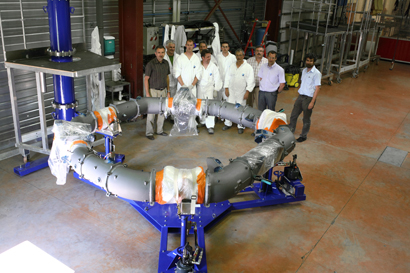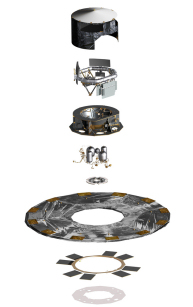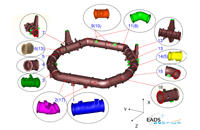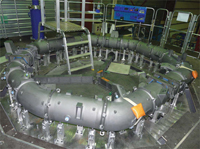Constructing the Gaia torus
The torus is constructed from sintered Silicon Carbide. The process starts with a 'green body'– SiC powder and an organic binder material that is compressed with hydrostatic forces in a high pressure facility. The resulting chalk-like material is easy to mill, although very abrasive in nature.
Each of the 17 segments of the torus is milled from a green body. The segments are then sintered in a furnace to produce a solid, hard body. The segment interface surfaces are lapped to create an extremely flat surface so that there is a tight interface between segments during the brazing process.
After lapping the individual segments are subject to static-proof tests in which forces exceeding the range and magnitude of those experienced during launch are applied. Silicon Carbide, like most ceramics, is a hard material which is subject to fracturing due to microscopic flaws in the structure. The likelihood of fracturing is statistical in nature and is governed by the Weibull distribution. The best way to ensure that the segments that are used in the construction of the flight model of the torus will not crack when in space is to verify the integrity of the structure by means of the static-proof tests. Segments which pass these tests are validated for launch conditions and may be used to construct the torus.
The proven segments are then assembled and aligned into the form of the torus. Laser tracking devices are used in conjunction with reference points on the segments to ensure precision alignment.
The interface segments are then coated with a special braze paste. When heated in a furnace to above 1000 °C this paste melts and seals the basin (created at the interface points) by capillary action. This completes the brazing process.
The final step is to perform a thorough inspection both visually (internal and external surfaces) and using ultrasound.
 |
|
Members of the Boostec and Astrium team just after the torus removal from the brazing furnace. Credit: ESA |







